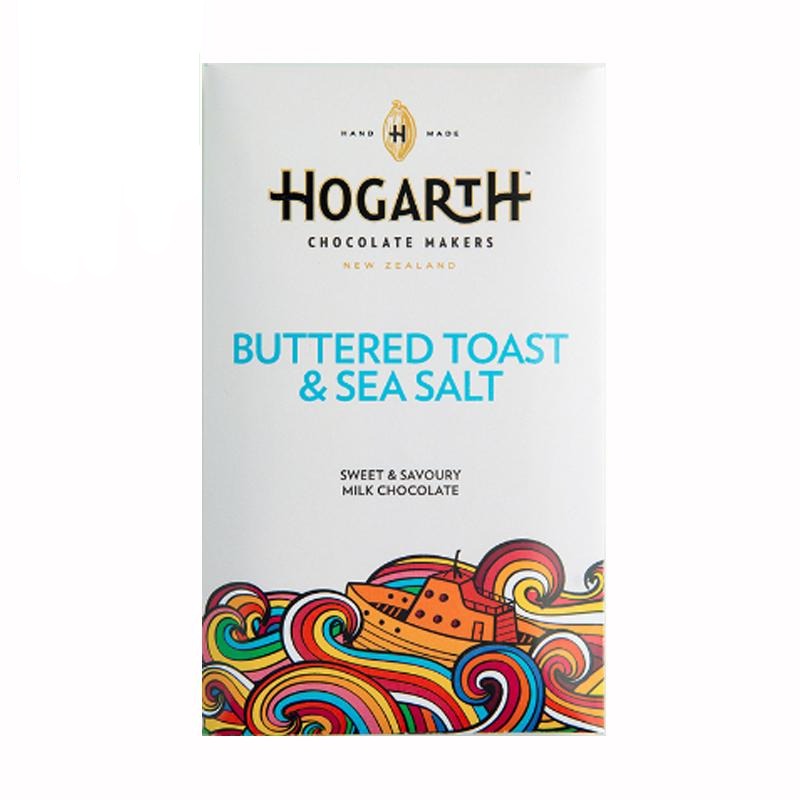For my latest interview I caught up with Trevor Smith from Metiisto Chocolate in Toowoomba, Queensland. Trevor founded Metiisto in Sweden in 2012 with his wife Magdalena, before they relocated the business to Australia in 2018. Metiisto has won many Australian and international chocolate awards, and in my opinion they make the best Solomon Islands bar in the world. Their new Gaura 70% bar is featured in our January subscription boxes, so I thought this would be a good time to catch up with Trev and learn more about what's happening behind the scenes...

What was your background before chocolate and why did you decide to become a chocolate maker?
I grew up in Alice Spring, a very isolated part of the world. My family owned a mechanical workshop and my Dad built off-road race cars from scratch. I think this helped me to understand that if you don't have a lot of money and want to do something, you need to learn how to build it. I dropped out of year 11 at school and did a panel beating trade. While I never liked the job, it helped me keep in work when I moved to Sweden in 2004. In 2011 I quit my job after our daughter was born - I wanted to build something of my own. Chocolate and patisserie had become an obsession at the time so I opened a little patisserie/cafe In Falun. Needless to say, it was a failure, but Whilst visiting my coffee supplier in Stockholm for an event I met Alan Mclure of Patric Chocolate. He had just started making chocolate a year before and it blew me away.
This inspired me to start Metiisto in 2012, with no money, no machines, and no idea what I was doing. I spent my nights studying old books and science journals to learn. We started with Akesson’s Madagascar and Brazil beans because he was one of the only guys that would sell small bags of cocoa to people like me. It's amazing to see how far that has all come today.
When I closed Metiisto in 2016 I was not going to do this anymore. I did not like the idea of starting from scratch again on the other side of the world. But, here we are.
What are some of the benefits of making chocolate from scratch on a small scale?
Like with everything you have pros and cons. About the only real advantage I can think of is that we can work with smaller farmers and nano lots. We are trying to aim for a happy medium between being small and big, but the goal is to make the biggest batches possible while still dealing with individual farms.
The benefit of doing bigger batches is control. When working with a larger batch we do more roasts allowing for less variation. Also for us, when it comes to conching we want a larger thermal mass to work with. Heat, friction and energy are all very important in conching and a larger mass helps us with all of that.

In 2018 you relocated from Sweden to Australia. How does the craft chocolate scene compare between the two countries?
When I started in Sweden in 2012 we were the only craft chocolate maker in the country. It was very hard yards and I just could not get locals to take notice. Swedes are very brand and trend-conscious, and unfortunately for Metiisto, it was neither trendy nor an established brand, so most of my business was exports. Nearly ten years later I can only think of about five Swedish makers.
When we turned up in Australia there were already something like thirty craft chocolate makers, so I was very unsure if we could even be seen or heard. The local community has really gotten behind us and we have a very loyal customer base.
It's certainly much much easier to get hold of cocoa in Europe. It is the reason you see European makers with exciting new origins all the time - the brokers in Europe have everything. So with one phone call, you can have ten different origins delivered to your door within the week. In Australia and New Zealand, you have to import the cocoa yourself.
It is hard to put a finger on what is different, I think Australians are just more supportive of people they think are doing a good thing.
In my opinion you’re making some of the highest quality chocolate in the world. How do you convey this high level of quality to potential customers, and is there anything in particular that helps people understand it?
Thank you. It's an ongoing battle, and something we are still learning as we go along. Information should not be underestimated and is part of the reason why we are opening a retail shop. The more transparent we can be and the more information we can give to the consumer, the better educated they are as a consumer.
The remelting* scene is huge in Australia and it's often very hard to let people know what we do vs what they do without sounding like we are having a go at people.
*Chocolatiers who remelt pre-made couverture, rather than making chocolate from the bean.
Is it challenging to make chocolate in a hot country? How does this affect the way you work?
The humidity can be a challenge, but apart from that, it's not too bad. In Europe, the heat was always a problem because most retailers either don't have or don't use air conditioning. Australia is pretty well set up for the heat. We also work inside of a fully insulated and climate controlled room that helps to keep temperature and humidity problems at bay.
Since you relaunched you’ve exclusively used Solomon Islands cacao, and you’ve just introduced some Indonesian beans. Do you plan to always use cacao that grows close to Australia?
I don't know. As I mentioned earlier, when we had the business in Sweden we could get whatever cocoa we wanted very easily. We have had to focus partly due to money and also the decision to simply do our own thing. We thought the Solomon islands cocoa had potential but up until that point it was not being taken seriously. We had - and still have - many retailers out there in the world that simply won't buy the Solomons chocolate because it's not what people want to buy. The cocoa and craft chocolate industry seems to be heading down the same path we have seen in coffee and beer, where the name of the origin or the myth/hype surrounding it is more important than whether the chocolate bar is good or not. This alone has made us decide that we want to work with origins that are not popular, for no other reason than that they are not trendy. The new Indonesian Origins are fantastic and they tick all the boxes when it comes to transparency and ethics.
I don't know what we will do in the future but I am certain we will be sourcing more cocoa for Asia.
We’re featuring your new Gaura 70% bar in our January subscription boxes. How did you source those beans and why did you decide to use them?
Way back in 2012 I got samples of Indonesian cocoa and was not impressed at all - the Java cocoa that is out there has a reputation for sure. This has put Indonesian cocoa in the same boat as Pacific cocoa. The assumption is that these regions only produce sub-par, smokey cocoa but the idea of using Indonesian cocoa has always been in the back of my mind.
I was contacted by Biji Kako well over a year ago about using Indonesian cocoa. At the time we simply could not afford to import large quantities on our own. After many, many talks we made the decision to work with them. Samples were sent out and we picked two origins to work with. We are always trying to find cocoa that fits our style while offering something different. Our aim is to work more and more closely with these Indonesian farms in the future.
Last time we talked you were putting the final touches to a beautiful new longitudinal conche. How will this affect your chocolate making process?
Control. The reason we make or modify any machine is about more control. For us, it's about trying to isolate every stage of production to get better control over each part of the process. We wanted better aeration during conching and could have chosen a few different options, but we settled on the tried and tested longitudinal design. I designed and built it late last year and it's up and running perfectly.
What are some of your favourite chocolate bars that you’ve recently tasted (other than your own)?
This is a tough one. I honestly don't eat much chocolate these days outside of trying our bars during production. But here are a few makers and bars that have impressed me over the years...
Patric Chocolate. Everything Alan does is perfect. His Madagascar 67% blew my mind back in 2011 and really set the bar high, and the way he approaches inclusions has had a big influence on Metiisto.
Dick Taylor. Love these guys. For me the first makers to hit the nail on the head when it comes to style, science, image and great chocolate. The Madagascar Milk they released recently reminds me so much of the 56% Madagascar dark-milk we used to make.
Hogarth Gianduia. I have no problem admitting that this bar was the inspiration for our Gianduja. It's damn good.
Friis-Holm. I like the way he approaches chocolate with a ‘no bullshit' attitude. He has always done his own thing and makes very good chocolate. His dark-milks really blew me away when they came out and helped us in the development of our own milk chocolates.
Fruition. Really nice people and bloody good chocolate.
What’s your favourite thing about being a chocolate maker?
Putting a smile on people's faces. Making chocolate is a very tough job. We spend many, many hours in the factory making chocolate and it can sometimes all get a bit much. It's really nice to get out to meet our customers. It just makes all the hard work feel worth it. I'm amazed how far we have not only come in nine years of chocolate making but in the two and a half years of being in Australia. At the same time, I feel there is still so much more to do and so much work that needs to be done. I’m definitely happy to be part of something that is at least trying to make the world a better place.

Thank you so much to Trev for taking the time for this interview. If you haven't already tasted Metiisto Chocolate, a world of joy awaits you!




